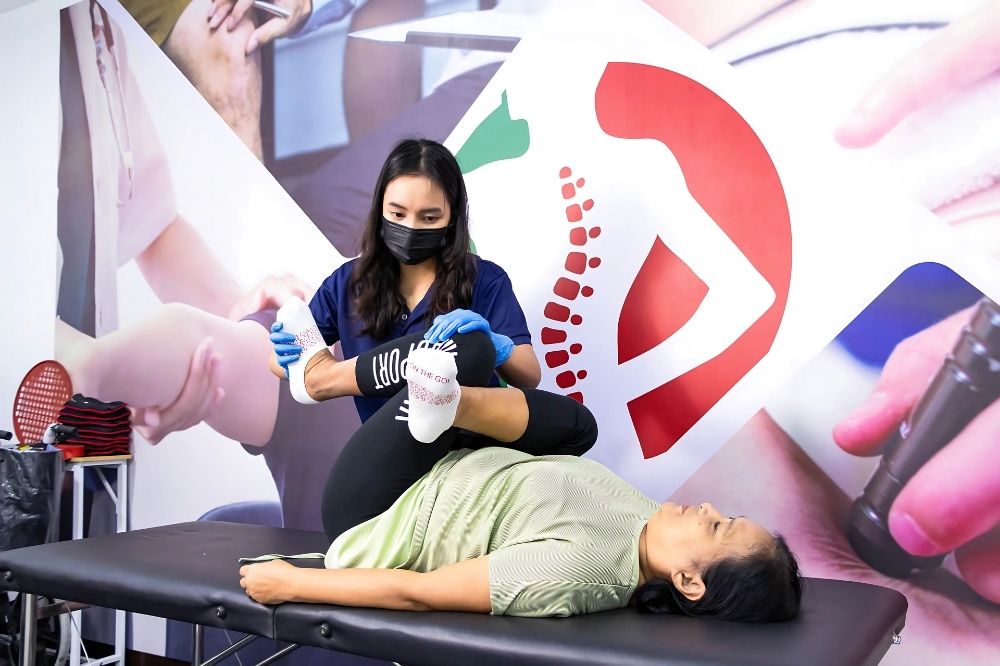Physical therapy is the most effective treatment for sciatica. But, most patients don’t really know when to start or if there’s really the “best” time to do so. In most cases, people do not take action until the pain becomes unbearable. They only start to consider visiting a physical therapist once they can’t manage the pain anymore. To answer the question, the best time to start physical therapy for sciatica is as soon as you get diagnosed and notice tingling, numbness, or persistent pain that travels from your lower back down to your leg.
We know that thinking of visiting a physical therapist can be scary, especially if it’s your first time. But you don’t have to be afraid or overthink as long as you find a reputable physical therapy clinic. Here, we’ll talk about the condition itself and when you should seek physical therapy for sciatica.
What Is Sciatica?

Sciatica is a condition caused by irritation or compression of the sciatic nerve (the longest nerve in the body). This nerve starts in the lower back and runs down through each leg, passing through the hips and buttocks. When the sciatic nerve is compressed or irritated, it causes pain, weakness, tingling, and numbness that radiates from the lower back down to the leg. In some cases, it may even be felt on the foot. It’s not a disease itself but only a symptom of an underlying problem, like spinal stenosis or a herniated disc.
Sciatica is a common condition that affects many people. According to Harvard Health, around 40% of people will experience this condition in their lifetime. That’s why it is always recommended to get regular check-ups to prevent yourself from getting it or at least reduce your chances of experiencing it. It’s always better to be proactive instead of being reactive when it comes to your health.
When to Seek Physical Therapy for Sciatica
The best time to seek physical therapy for sciatica is as soon as you get diagnosed with it. However, we understand that not everyone has the means or the capacity to get proper care right away. Here are some situations that can help you decide when it’s time to see a physical therapist:
1. As soon as you get diagnosed with sciatica
As soon as your doctor confirms that you have sciatica, the best thing you can do is visit a physical therapy clinic right away. Doing this prevents the condition from worsening so that you don’t have to worry about dealing with more intense pain or discomfort as you go through life. Your PT will also teach you how to take care of your lower back and legs properly, which can be very beneficial as you age.
2. When the pain is affecting your daily activities
If you’re already dealing with pain due to your lower back problem and it’s making it hard for you to sit, stand, walk, or perform activities that you need to do or enjoy doing, it may be the best time to visit a physical therapy and rehabilitation center. Sciatica can be extremely debilitating because even small movements can trigger pain, especially if the flare-ups happen often.
Physical therapy can help you deal with the pain by teaching you how to move while avoiding the triggers and also build strength in your lower back muscles. This way, you can start moving freely and more comfortably.
3. When the symptoms are becoming severe
If your symptoms are getting worse, it usually means that your sciatic nerve is under more pressure. That’s not a good thing, especially if you’re living an active lifestyle. Your balance and ability to walk can be compromised, which affects your everyday activities. Physical therapy can help relieve the pressure on your sciatic nerve through hands-on techniques, BTL spinal decompression therapy, electrotherapy, and more.
4. When pain lasts for more than a few days
Long-term pain is never a good sign for any condition. It’s typical and expected to think that all you might need is rest or some pain medications. But the truth is, persistent pain often means there’s an underlying issue that isn’t resolving on its own. When this happens, your pain might even get more severe unless you seek professional help. Physical therapy programs can help identify the root cause of your sciatica and address it there and then. This way, your condition becomes more manageable instead of you enduring the pain.
It’s Time to Stop Living with Sciatica Pain

If you’re going through any of these symptoms, you can visit the nearest PMP Pain Center branch in your area. We’ve helped 10,000+ patients with 95-97% feeling better and living with less pain. For sciatica, the treatments we often use include shockwave therapy, laser therapy, tecar therapy, interferential current therapy, ultrasound therapy, spinal decompression, dry needling technique, cupping therapy, blading technique, advanced soft tissue release, spinal manipulation, and advanced manual techniques.
Treatment plans vary depending on your specific condition. Every session is done with doctor supervision and handled by our licensed physical therapists to make sure your recovery is safe and well taken care of.
Seeking physical therapy for sciatica is the best thing you can do for yourself. Living with constant pain is not something you should just “get used to,” and you definitely don’t have to wait until it gets unbearable before getting help. The earlier you start, the better. If you have sciatica and have been experiencing pain, or even if you’re not constantly in pain but have been diagnosed, feel free to visit a PMP Pain Center near you. Book an appointment to get started.







